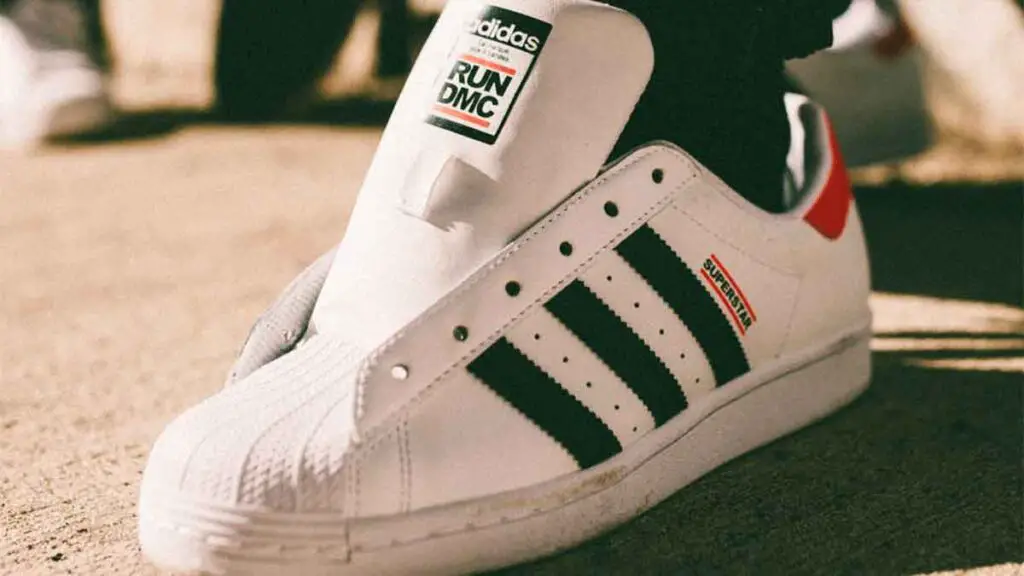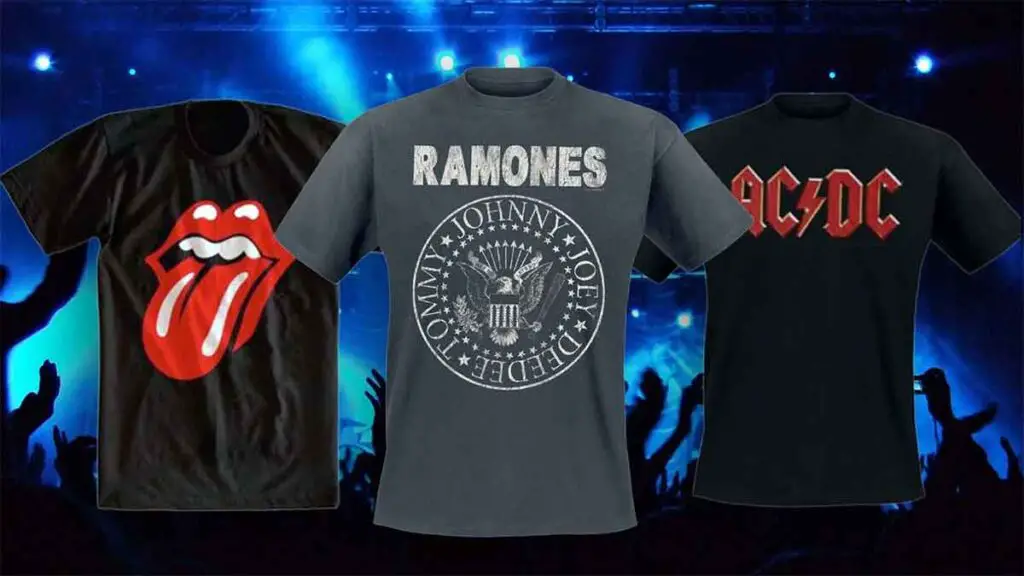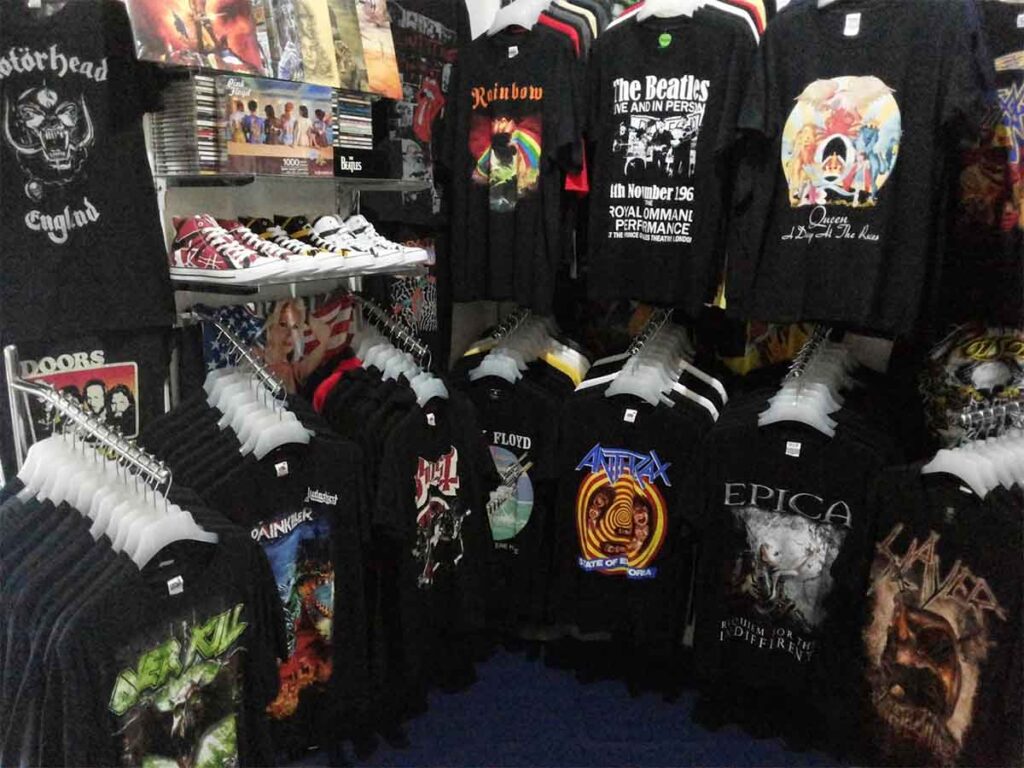Band merchandise has come a long way from simple tour T-shirts and bootleg posters. What was once a humble souvenir has transformed into a multi-billion-dollar industry, with high-fashion collaborations, limited-edition sneaker drops, and luxury capsule collections.
Today, band merch isn’t just for fans—it’s a style statement worn by celebrities, influencers, and music lovers alike.
Contents
The Early Days: A Simple Souvenir
In the 1960s and ’70s, concert merchandise was all about connection. Fans attending a Beatles or Rolling Stones show might pick up a simple logo tee or a button, eager to take home a piece of the experience. Early merch was often basic, with crude printing and generic designs. It wasn’t about fashion—it was about proving you were there.
KISS changed the game in the late ’70s, pioneering a new era of merch with everything from lunchboxes to action figures. Their approach laid the groundwork for the explosion of band merch in the decades to come.
The ’80s and ’90s: From Arena Rock to Streetwear
By the 1980s, band T-shirts had become a staple of rock and metal culture. Tour tees from AC/DC, Metallica, and Guns N’ Roses were not just mementos—they were badges of honor. Fans wore them as a symbol of their dedication to the music.
Meanwhile, hip-hop artists like Run-D.M.C. and Public Enemy started tapping into streetwear culture, leading to a crossover between music and fashion. Run-D.M.C. ‘s endorsement of Adidas (and the resulting collaboration) was a turning point, proving that merch could be more than just a concert souvenir.

The 2000s: Limited Drops and Designer Collabs
As nostalgia for vintage band tees grew in the 2000s, brands took notice. High-fashion houses like Balmain and Gucci started incorporating rock band logos into their designs, while Supreme released limited-edition collaborations with groups like The Misfits and Black Sabbath.
Kanye West took merch to another level with his Yeezus and Saint Pablo tour collections, blending minimal design with high-end aesthetics. Suddenly, merch wasn’t just something you bought at the show—it was something you lined up for, like a sneaker drop.
Today: Band Merch as High Fashion
Now, band merch is everywhere—from the runway to the resale market. Artists like Travis Scott, BTS, and Billie Eilish have turned their merch into full-blown fashion lines, often selling out within minutes. Metallica and Nirvana tees are seen on supermodels and influencers, fetching hundreds of dollars in vintage stores.
Luxury brands have also jumped in. The Rolling Stones partnered with Amiri, while Led Zeppelin collaborated with John Varvatos. Even fast fashion brands like H&M and Zara have cashed in, making rock tees a wardrobe essential. Merch has evolved beyond music—it’s a lifestyle statement embraced by people who may not even be fans of the bands themselves.
Different Types of Band Merchandise
Band merch today extends far beyond the classic T-shirt. Some of the most popular and creative items include:
- Hoodies & Jackets – Premium outerwear featuring band logos and artwork.
- Vinyl & Box Sets – Collectible editions of albums with exclusive artwork and extras.
- Posters & Prints – High-quality, limited-run prints of album covers or concert photography.
- Sneakers & Accessories – Limited-edition collaborations with brands like Vans and Converse.
- Signature Instruments – Guitars, drumsticks, and keyboards branded by legendary artists.
- Home Goods & Lifestyle Items – From coffee mugs to skateboards, band logos are everywhere.
Band Merch and Memorabilia in the Collector’s Market
Rare and vintage band merch and memorabilia have become highly sought-after, with some items fetching thousands at auctions. Original tour T-shirts from the ’70s and ’80s, autographed memorabilia, and exclusive collaborations often appreciate in value. Some of the most expensive music-related memorabilia ever sold includes:
- A Beatles Sgt. Pepper’s Lonely Hearts Club Band drumhead, sold for $1.1 million.
- Kurt Cobain’s MTV Unplugged cardigan, auctioned for $334,000.
- Mick Jagger’s velvet jumpsuit, worn during the band’s 1972 tour, fetched £20,000 at auction.
- Freddie Mercury’s crown and cloak ensemble used during Queen’s 1986 Magic Tour sold for £635,000 at auction.
- Paul McCartney’s handwritten lyrics for “Hey Jude” auctioned for $910,000 in 2020.
 What’s Next? The Future of Band Merch
What’s Next? The Future of Band Merch
With NFTs, virtual merch, and interactive fan experiences on the rise, the future of band merchandise is evolving beyond physical products. Imagine exclusive digital tour tees for your online avatar or limited-edition holographic posters that change based on your favorite song. The possibilities are endless.
One thing’s for sure—band merch isn’t just a souvenir anymore. It’s a cultural movement, a fashion statement, and a piece of music history.




